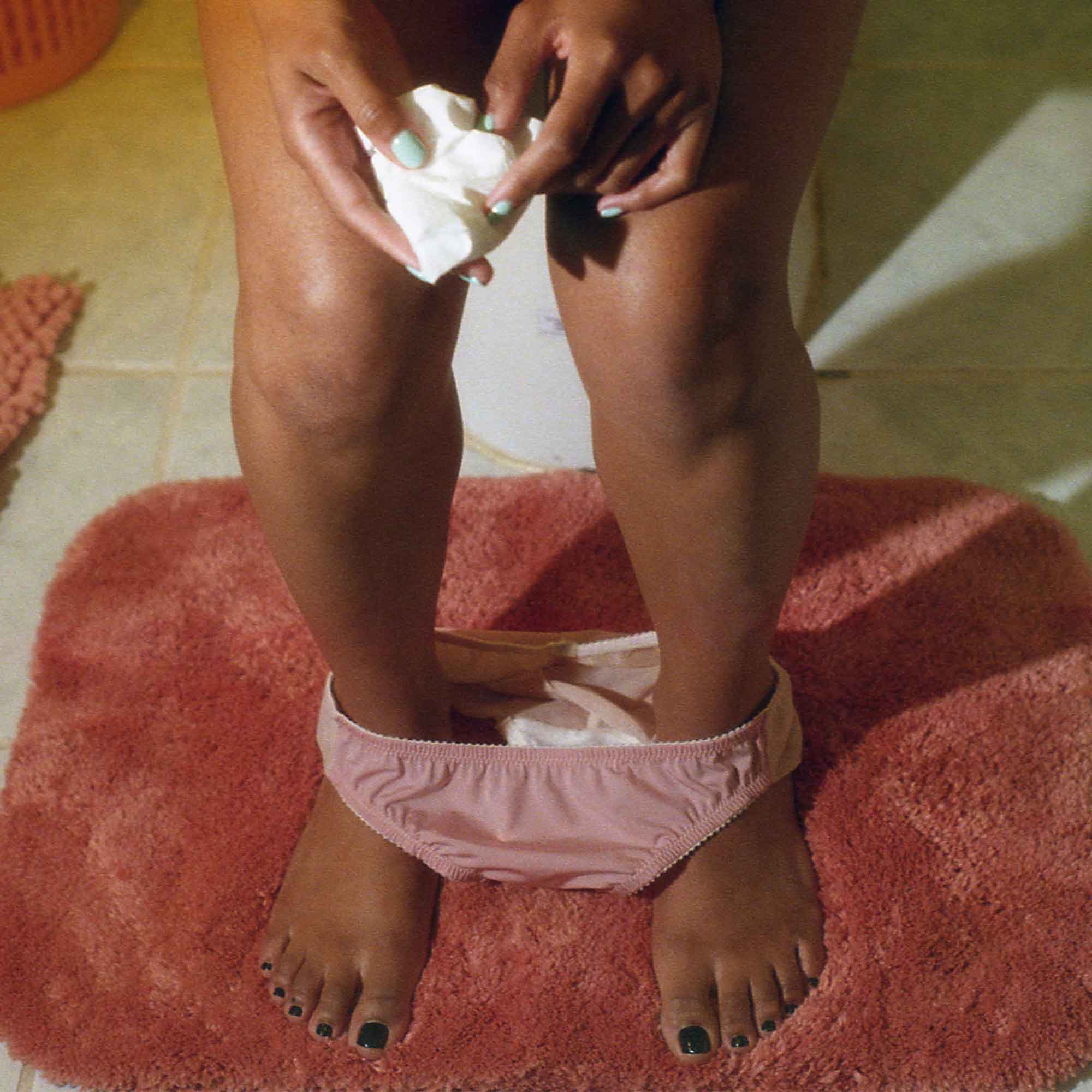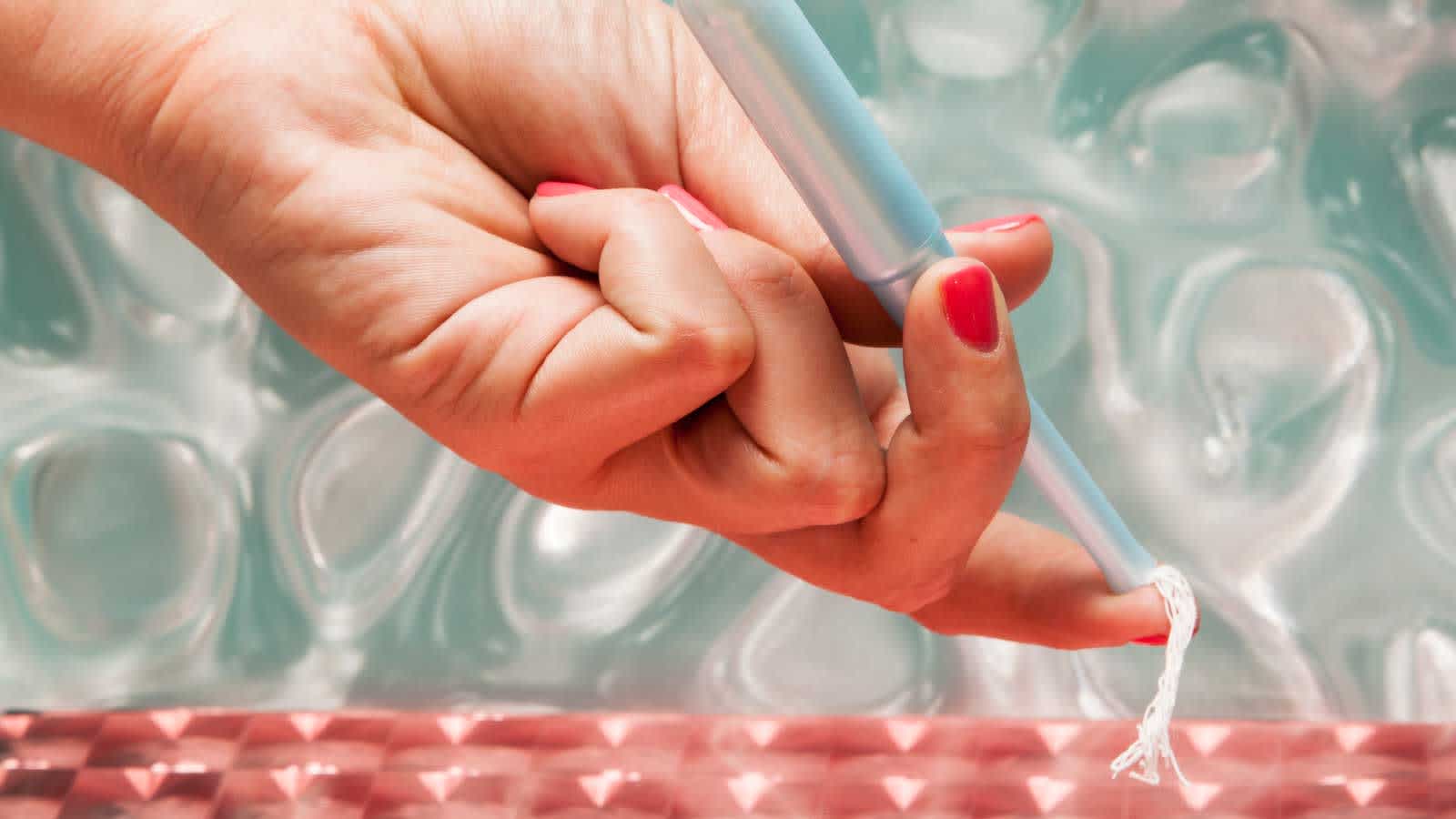
- POPSUGAR Australia
- Fitness
- Have You Ever Used Socks to Deal With Your Period? Those Experiencing Period Poverty Have
Have You Ever Used Socks to Deal With Your Period? Those Experiencing Period Poverty Have

Welcome to POPSUGAR Uninhibited, a space where anyone with a period can come for advice, recommendations and support. Here, we’ll tackle topics like PMS, sustainability, post-partum periods and bring you first-person experiences in our period diaries. We also want to raise awareness around period poverty, with the aim to ignite change with the help of our launch partner Modibodi and charity partner Share the Dignity. You can find all of the stories here.
Period poverty is an isolating experience. When you’re stuck in the cycle of period poverty, the shame and stigma attached to it makes it hard to ask for help. That coupled with a lack of menstrual health education and access to products allows this cycle to continue on and on.
With 13.6 per cent of Australians living under the poverty line and a large chunk of these people who menstruate, it’s easy to see why period poverty occurs in our country. In case you’re not familiar with this experience, we have compiled a list of facts about period poverty in Australia.
Think of this as period poverty by numbers. Earlier this year, Australian charity Share the Dignity surveyed 125,205 people to find out more about the period experience and to date, it is the largest survey of its kind. This research is incredibly important, and here’s what you need to know about period poverty.
- 40 percent of survey participants had changed to a less suitable period product due to cost
- 49 percent wore a pad or tampon for more than four hours because they didn’t have any more to use
- 22 percent had to improvise on period products due to cost
- 10 percent of those who weren’t able to afford period products were university and TAFE students and 19 per cent were unemployed
- Of those who identified as gender-fluid, non-binary and transgender, 30 percent were unable to afford period products
Of the 3.24 million people living below the poverty line in Australia, 20 per cent of these people identify as women, with those identifying as men coming in at 17 per cent. The poverty experience is far more common for women, with single mothers, older women and those who experience domestic and family violence, at the greatest risk.
When you factor in that all of these people who menstruate each month without fail, that is a lot of money going towards period products. And, things like food and rent often take priority, causing many of those menstruating people living in poverty to improvise on what they use to catch their period.
This improvisation often leads people to use items like rags, toilet paper, socks and paper towels to deal with their period. As the Share the Dignity research concluded, many people also use products like pads and tampons for far longer than they should, or in some cases, reuse products, which puts them at a higher risk of infection.
So where do we go from here? Well, ending period poverty in Australia requires a multipronged approach. The period education in the national curriculum needs to be changed, as do conversations around menstruation. Positive period messages need to be the norm going forward to end any shame or stigma attached to this experience.
As for what you can do, one way is to share this information with people in your life. Make sure everyone you know is aware that period poverty is a real issue, even in our country. To actively help change this experience for people, you can also donate period products to Share the Dignity’s donation drives throughout the year.
For more information about how and where to donate, visit the Share the Dignity website.



